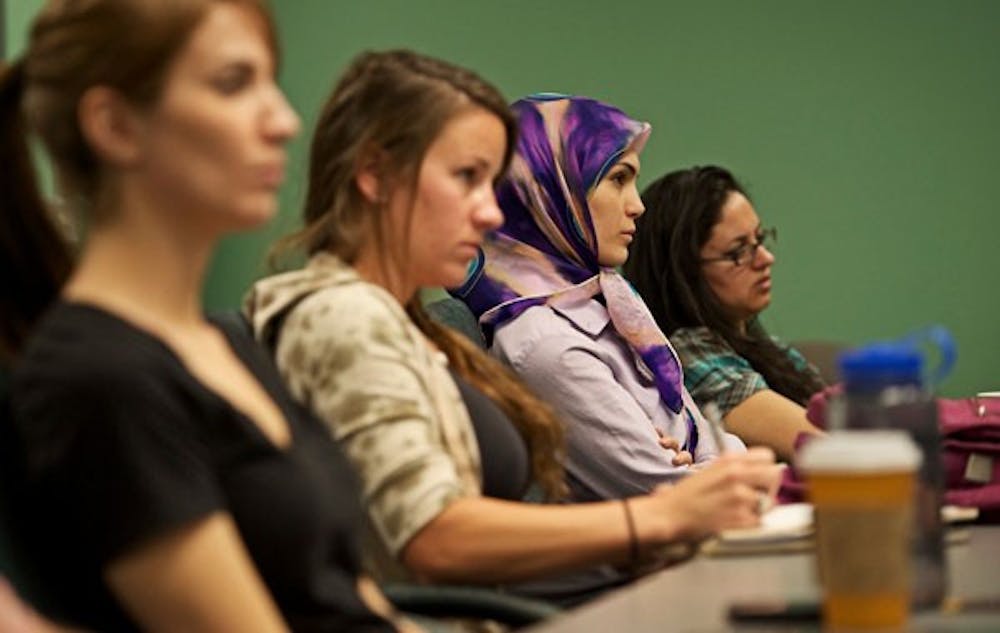As energy-efficient housing remains an ongoing focus for ASU researchers, one University architect outlined the importance of design when it comes to building sustainable homes in a lecture Tuesday.
Ernesto Fonseca, an architect and designer for the ASU Stardust Center for Affordable Homes and the Family, spoke about residential solar design and technology on the Tempe campus.
In addition, Fonseca discussed two ASU housing projects completed using sustainable design: one in Guadalupe, Ariz., and the other in Nageezi, N.M. One house was completed in New Mexico to test designs under cold conditions and the Arizona location utilized warmer temperatures.
“We actually design, build and then test for a year or two,” Fonseca said. “We test them from A through Z. We go from testing indoor quality to indoor thermal comfort.”
Overall, housing in the U.S. uses about 36 percent of the country’s total energy usage, he said. When building homes, it’s necessary to look at energy delivery, design and transportation to and in the city, he said.
“One of the most common mistakes that many engineers … make is the fact that we tend to approach energy efficiency in terms of technology,” Fonseca said.
Technology is important, but engineers need to think in terms of design first without investing in too much technology, he said.
For example, selecting the right materials to build the walls and roof can affect building efficiency and temperature control.
“Ninety percent of your heat gains are going to come through the roof,” Fonseca said.
To combat this, he suggested using foam insulation and painting the roof white to limit heat transfer.
Ramzy Kahhat, an assistant research professor in the School of Sustainable Engineering and the Built Environment, coordinated the lecture and the Environmental Engineering Seminar Series overall.
“Ernesto Fonseca and his group, Stardust, are doing very important things regarding residential buildings for low-income communities,” Kahhat said.
Ayla Kiser, an environmental engineering doctoral candidate, said sustainability in design interests her.
“As an environmental engineer, I’m trying to learn as much about different sustainable methods of living as I can,” she said.
Kiser said she talked to Fonseca about an adobe house in New Mexico that was built partly underground with one-foot thick walls and no air conditioning.
“This was in the middle of July and it was like 110 degrees outside,” Kiser said. “I walked into this house and it was like 70-something degrees. It felt like the place was being air-conditioned, but it wasn’t.”
Kiser said she wonders why people aren’t building their houses in a similar fashion.
“I couldn’t believe that so much electricity could be saved if we were making more houses like this,” she said.
Kiser said Fonseca told her thick adobe walls and building part of a house underground is a proven energy-efficient technique.
“He said the problem is that most people’s mindsets [are] the mainstream — they want their houses to look a certain way,” she said.
It’s hard to sell a majority of people something that’s “alternative.”
“Do we want to have a house that looks better but is less efficient, or are we actually going to think about our futures and live in something that’s sustainable but maybe a little bit different?” Kiser said.
Reach the reporter at reweaver@asu.edu





